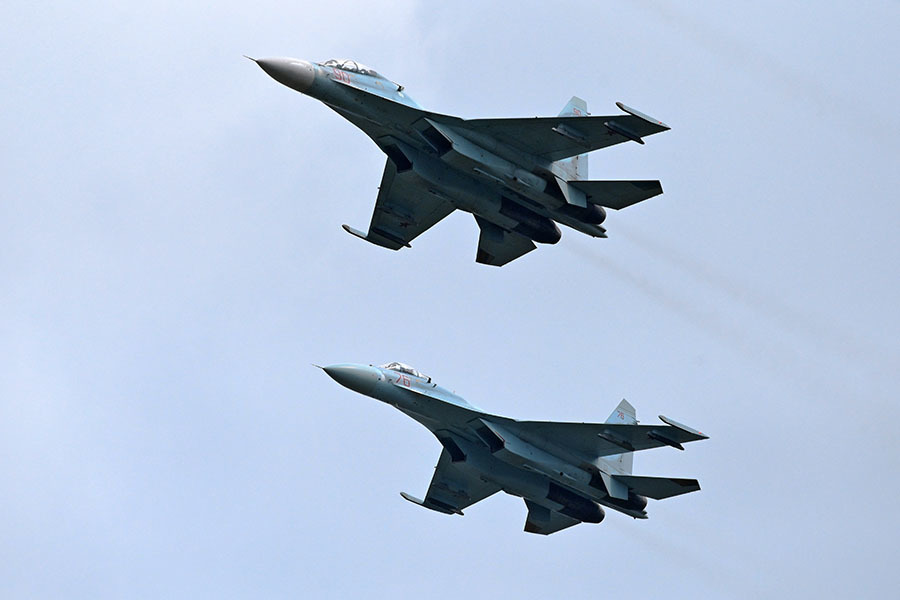The head of the Russian Ministry of Defense, Sergei Shoigu, drew attention to the frequency with which NATO planes began to perform training flights with imitation of missile strikes on Russian territory.
The minister pointed out that this NATO practice is alarming.
“If earlier with this or that frequency (of course, not like now, somewhat less often) it was mainly reconnaissance aircraft, now regular flights and approaches with training, imitation of missile strikes, including the use of a large number of aircraft have begun ", - said Shoigu in an interview with the TV channel" Russia 24 ".
A day earlier, the head of the RF Ministry of Defense also cited data according to which the intensity of the use of NATO reconnaissance aircraft near the borders of Russia increased by more than 30% compared to last year.
"In August last year - 87 flights, now - about 120", - said the minister.
He also stressed that only in the period from August 23 to September 2, Russian aviation at least 10 times rose to intercept foreign reconnaissance aircraft.
Su-27 fighters
RIA News
© Sergey Pivovarov
The head of the defense department also recalled that about the recent escort of three US strategic bombers by Su-27 fighters over the Baltic Sea.
The incident took place on August 31st.
As the National Defense Control Center of Russia reported at the time, on that day, Russian airspace control over the neutral waters of the Baltic Sea detected three air targets approaching the state border of the Russian Federation.
To identify them, three Su-27s from the air defense forces of the Baltic Fleet were taken into the air.
The crews of the Russian aircraft identified the aerial targets as the US Air Force B-52H strategic bombers.
Note that many such incidents were reported throughout August.
On the same day, August 31, the Russian Su-27 flew to intercept aircraft from Germany, Sweden and Denmark over the Baltic Sea.
The crew identified the targets detected by means of control as the strategic reconnaissance aircraft RC-135 of the US Air Force, the Gulfstream reconnaissance aircraft of the Swedish Air Force, the Challenger reconnaissance aircraft of the Danish Air Force and the P-3C Orion patrol aircraft of the German Navy.
For three days of these events, on August 28, two Su-27 fighters took to the air over the Baltic Sea to intercept the American B-52H strategic bomber.
At the same time, the Russian aircraft was sent to intercept the strategic reconnaissance aircraft RC-135 of the US Air Force, the Gulf Stream reconnaissance aircraft of the Swedish Air Force and the Challenger reconnaissance aircraft of the Danish Air Force.
Prior to this, on August 20, a similar incident occurred in the Black Sea.
The Su-30SM fighter was raised to intercept the Atlantiс-II reconnaissance aircraft of the French Navy and the Sentinel-R1 of the British.
A similar situation arose in other regions as well.
In mid-August, a MiG-31BM fighter from the air defense (air defense) forces of the Northern Fleet took off to intercept the US Navy P-8A Poseidon base patrol aircraft over the Barents Sea.
Earlier, in the same region, a Russian MiG-31 flew to intercept a Norwegian electronic warfare aircraft.
The incident took place on August 4th.
The Russian side identified the target as a Falcon 20 aircraft of the Norwegian Air Force.
Commenting on the intelligence activity of NATO countries near the Russian borders, military expert, retired colonel Viktor Litovkin, noted that the money allocated by NATO is being spent on building up tensions near the borders of the Russian Federation.
“NATO is pulling us into an arms race to make us spend extra money on defense and thus try to ruin our economy.
But they are trying in vain, because we are not going to participate in the arms race, we have all the necessary means, sufficient to give any rebuff to a possible aggressor, "Litovkin said in an interview with RT.
Professor of the Academy of Military Sciences Vadim Kozyulin, in turn, pointed out that in the view of the American military, it is necessary to continue the course of encircling Russia, preparing for some kind of military conflict.
“I don’t think they are ready to get involved in this conflict, but this is the nature of the military: they, like athletes, train, preparing for the competition, but, fortunately, the competition is not coming,” the expert believes.

